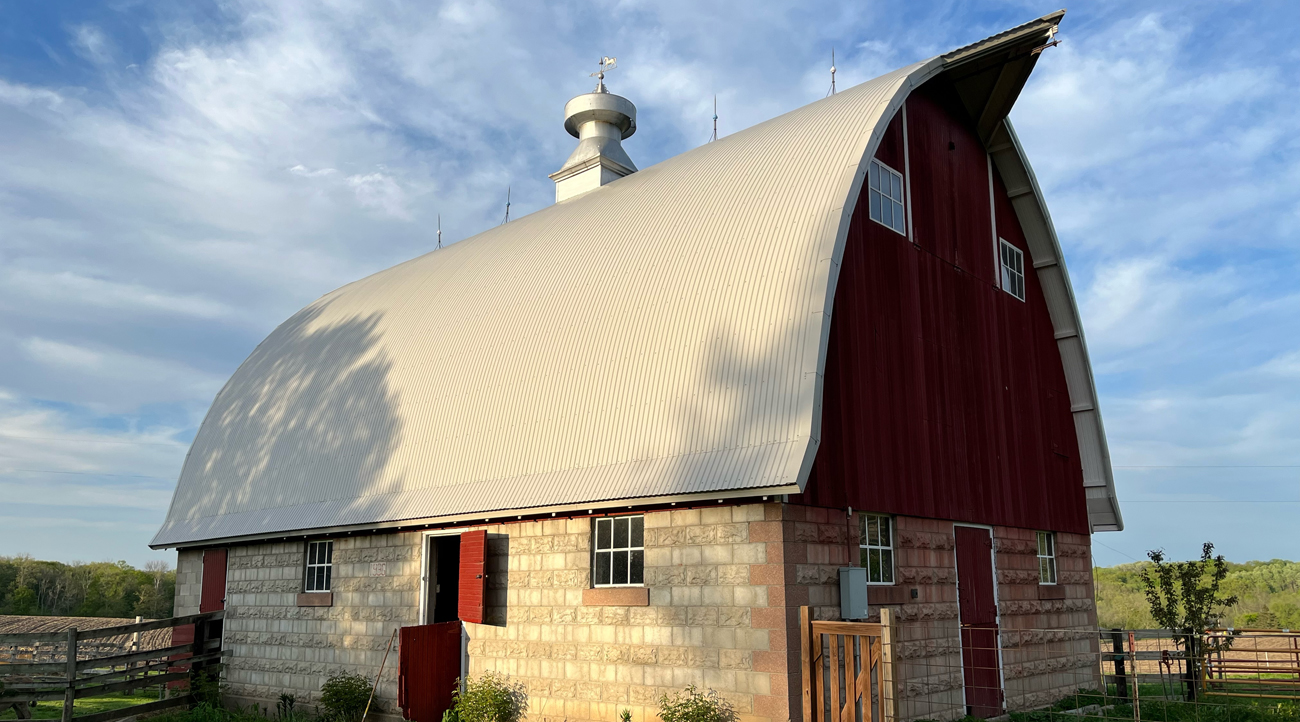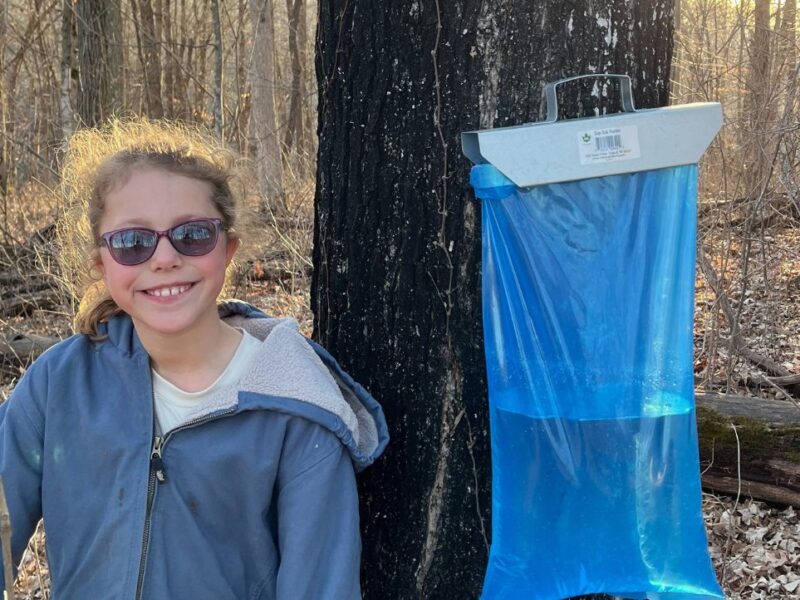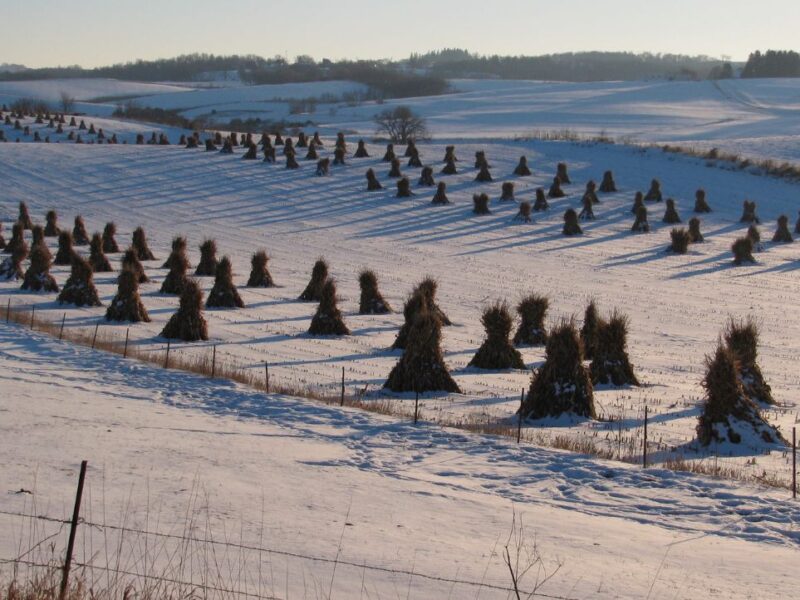The 1936 barn was built by Ole Peterson and once served more than 20 milk cows. (Photo by Greg Schieber)
Essay: Little Barn in the Big Woods
AMHERST TOWNSHIP, FILLMORE COUNTY — Our little farm in the Big Woods came to us in a 16-acre package, consisting of a building site, hayfield, and a little sliver of the Big Woods itself. Prior to our purchase, it was a 70-acre enterprise—much of which had been grubbed and cleared many decades ago, creating a large enough opening in the woods to provide a living to Ole Peterson beginning in 1912.
It was passed next to Clarence Peterson in 1941, then to Alton and Rosalie Housker in 1964, to Phil & Heidi Dying in 1992, and finally to myself in 2014. Local historians suggest the township road used to continue past our place and down the ravine, eventually crossing a bridge over the South fork of the Root River. No evidence of the bridge or the road remains. We are a dead end.
The 1936 dairy barn built by Mr. Ole Peterson still stands proudly, in almost original condition. On the South end, four box stalls run the width of the barn, once placeholders for the teams of workhorses that powered the farm. Each stall has its own hay trough. They are boxed in by a stout stack of white oak slabs that are no worse for wear nearly 90 years later.
The remaining two-thirds of the barn had two rows of stanchions, one row still existing, the other removed in more modern times to make way for a calving pen. It is difficult to imagine a time when a herd of 24 to 30 milkers paid the bills. Thick white oak beams and posts hold the structure together—looking as solid as on the day they were milled and framed together. They have never been whitewashed, a hint that commercial milk production must have concluded prior to oversight by the local milk inspector.
A handcrafted and worn wooden ladder provides access to the cavernous hay mow—now mostly empty except for a small corner of hay bales we store and an irritating amount of pigeon excrement beneath the center hay rail. Two hay chutes provided easy access to the hungry ruminants below. The electrical wiring, undoubtedly an after-the-fact accessory, consists of the old cotton wrapped variety. Light sockets are minimal—only a single bulb placed high in the rafters reflects dim light and shadows throughout the entire hayloft.
Although modern electricity made its way in, no milk pipeline was ever added. The round roof is now gray steel, having replaced the worn shingles that replaced wooden shakes. A single cupola marks the center. The placement and shallow depth of the manure gutter tells a story of a time when dairy cattle were half to two-thirds the size of a modern Holstein. The entire structure is 30 feet by 50 feet—a pretty small barn even for the time it was built. While many original diary barns of this nature saw modern additions or renovations, suffice it to say time left this one behind.
Once a year I go to work cleaning out the accumulated manure and waste hay with a manure fork, just as has always been done. Except, I’m doing it at much lower volume and as a weekend hobby. The barn hosts a pair of resident barn cats. Notch outs in the lower half of the Dutch barn doors provide them easy access and a quick escape portal when being chased by the dog.
I’ve personally known the cozy feeling of a dairy barn on a chilly January night. I find it calming to imagine a time when the daily rhythms of the farm included morning and evening trips to the barn to do the feeding and milking of the small collection of stock that would have called this barn home. At present, it’s shelter for my wife’s miniature donkey named Wilbert, and home to the two cats imported from my uncle’s dairy farm. We also use it to store our gardening tools and supplies that aid in nurturing the adjacent cow yard turned garden.
The barn was the backdrop for our wedding ceremony and pictures. I sometimes wonder if the neighbors gathered after it was first constructed to celebrate with a barn dance, as was commonly done in an earlier era. It seems to stand guard over our spot in the Big Woods, a silent sentinel watching as the seasons change and caretakers come and go.
© Greg Schieber, 2023
…………………

Contributor
Greg Schieber is an attorney in Harmony and an amateur homesteader, along with his wife and three young children, on their small acreage in Fillmore County’s Big Woods.






